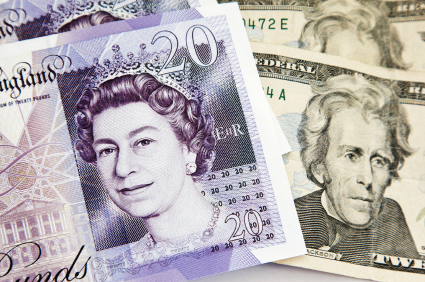Gold exploited the continual mixed sentiment towards the Dollar yesterday, with the metal rallying around $20 to $1192. The weak USD sentiment is the major reason why Gold managed to rally, although some could say that investors might be beginning to look towards safe-haven assets as a result of a potential Greece default at the end of the month.
The most likely reason for the jump in value of Gold however is the weak USD, and traders are currently showing no signs of interest towards purchasing the major currency despite an FOMC decision in under two days. While the chances of the Federal Reserve raising US interest rates are extremely slim, I did think traders might be tempted to still purchase the USD on the outside chance that the Federal Reserve might shock the financial markets with a rate rise. It is more likely that the Federal Reserve will finally provide the necessary clarity to investors on when they will be raising US interest rates, however the Gold bulls are currently discounting the potential for this and enjoying momentum.
Although the weak USD sentiment is providing the Gold bulls with a boost, one commodity that is failing to receive any benefits from the USD weakness is WTI Oil. The price of WTI Oil has dropped by close to $3 in just three days to $58.72, which could be linked to the aftermath of OPEC leaving production levels unchanged just a week ago. The markets receiving confirmation that production is remaining unchanged, and that oversupply concerns will continue to be a dominant theme, has probably made buyers hesitant towards purchasing the commodity. This is most likely to be the case, but the recent International Energy Agency (IEA) report expressing that although demand for the commodity is increasing, OPEC supply is now at its highest level since August 2012 would have also weighed on investor sentiment.
While we have now encountered a significant correlation between declining US oil rigs and reduced weekly inventory surpluses from the United States, increased production from OPEC will outweigh any reduced supply from the United States. Investment in oil production throughout the Middle East is on the rise and it has become clear to the markets that OPEC are willing to bypass the depressed oil prices, because it provides an opportunity to begin regaining vital market share. For those economies reliant on commodity prices, indications that they are set to stay low will result in repeated pressure on their commodity-linked currencies. This is something that will be noticed globally, with this stretching to the New Zealand Dollar to Malaysia Ringgit and Russia Ruble.
Advertisement
Speaking of Russia, the Ruble managed to strengthen against the Dollar yesterday despite the Central Bank of Russia (CBR) cutting interest rates by 100 basis points to 11.5%. There seems to be some surprise that the USDRUB still managed to decline to 54.33 after the interest rate cut, but it should be taken into account that the CBR being in a position to cut rates around six months after erratically raising them on several occasions to prevent capital outflows is a positive move. The CBR is clearly more confident in the Russian economy and the markets feel positive that lower rates will enable the economy to withstand any downside pressures, with this being the most likely reason why the Ruble unexpectedly advanced after the interest rate cut.
In Europe, all attention remained on Greece talks and it will continue to do so since we are now only around two weeks away from a possible Greek default. There is no doubting that Greece is desperate for cash and needs a deal to be reached sooner rather than later, although this is clearly unlikely to happen soon and the markets are beginning to factor Greece risks into European stocks. This can’t be said for the Euro though, which appreciated towards 1.13 against the USD as a result of the weak Dollar sentiment with this meaning traders are probably going to enjoy another opportunity to sell-on rallies with the EURUSD currently looking over extended.
Unless there is some serious widespread and lengthy Dollar weakness, there is no justification for the EURUSD to be trading at 1.13. The constant and ongoing Greece risk is enough of a reason to say the currency is vulnerable to downside pressures, however the recent dovish comments from both Angela Merkel and the ECB’s Coeure at the same time the currency pair was previously at this level provides further reason to expect a decline at some point. While the markets are rightly concentrating on Greece risks, the dovish comments from senior leaders suggests to me that there is some unease around Europe over the prospect of the recent Eurodollar appreciation.
Advertisement
Follow Jameel on Twitter @Jameel_FXTM
For more information please visit: Forex Time
Add a comment







